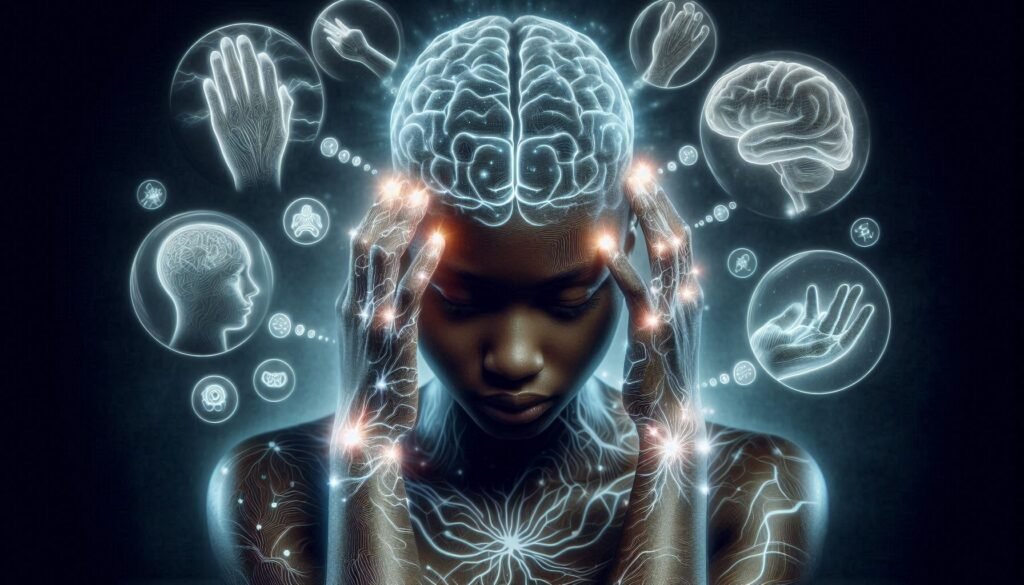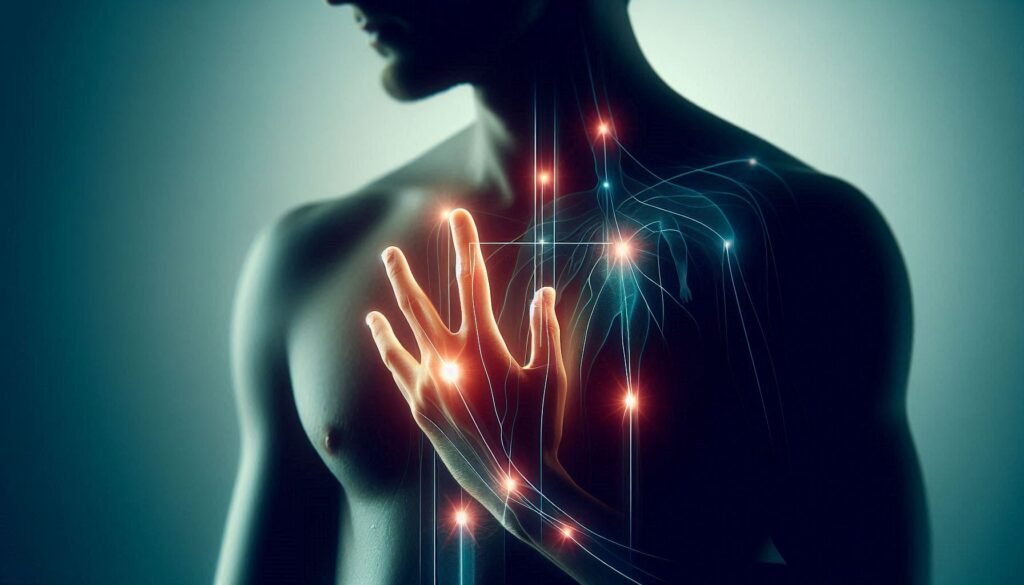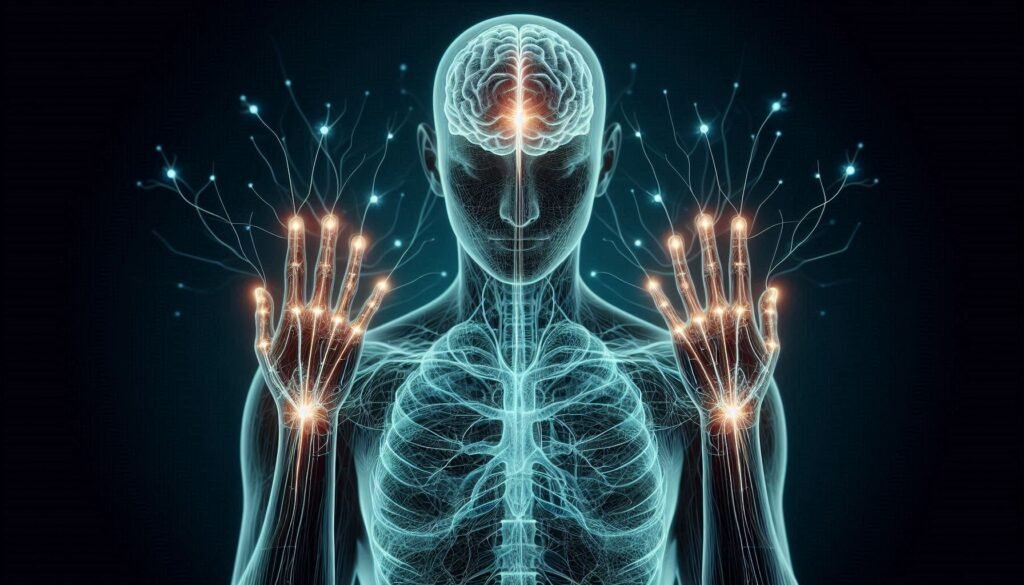Living with paresthesia—those strange, tingling sensations that can pulse through your body—can be a perplexing experience. While many are familiar with the physical aspects of this condition, fewer recognize its profound psychological impact. Chronic tingling doesn’t just disrupt daily activities; it can also take a toll on mental health, leading to anxiety, depression, and even social isolation.
As we delve into the intricate relationship between paresthesia and mental well-being, we’ll explore how these sensations affect not only our bodies but also our minds. Understanding this connection is crucial for anyone grappling with these symptoms or supporting loved ones who are.
By shining a light on the hidden emotional challenges associated with chronic tingling, we aim to equip you with the knowledge needed to foster resilience and improve overall quality of life. Let’s embark on this journey together toward better understanding and managing paresthesia’s psychological effects.

Understanding the Mind-Body Connection in Paresthesia
The mind-body connection is a fascinating aspect of human health, particularly when it comes to conditions like paresthesia. This phenomenon often presents as tingling or numbness, which can stem from various causes, including nerve damage or pressure on nerves. Yet, the experience goes beyond physical sensations.
Emotions and stress play significant roles in how we perceive pain and discomfort. When individuals face chronic paresthesia, anxiety may amplify their symptoms. The anticipation of discomfort can create a vicious cycle where heightened emotions result in increased awareness of bodily sensations.
Furthermore, our mental state influences physiological responses. Stress hormones can trigger inflammation or alter nerve function, exacerbating the feelings of tingling. Recognizing this link opens avenues for holistic treatment approaches that consider both psychological well-being and physical health.
Understanding this intricate relationship is vital for effectively managing paresthesia and its broader implications on life quality. By addressing both aspects, individuals can find pathways toward relief and improved overall wellness.
Anxiety and Depression: Common Mental Health Challenges
Chronic paresthesia can significantly impact mental health, often leading to anxiety and depression. Individuals may worry about the cause of their symptoms, fearing they indicate a more serious condition. This constant state of concern creates a cycle where anxiety feeds into physical sensations.
Depression is also common among those experiencing persistent tingling or numbness. The emotional toll of living with unexplained discomfort can lead to feelings of hopelessness and despair. Many individuals find it challenging to engage in daily activities, further exacerbating their low mood.
Social interactions may diminish as well, as sufferers withdraw from friends and family due to embarrassment or fear of judgment. This isolation can deepen both anxiety and depressive symptoms, making it difficult for them to seek help or support.
Recognizing these connections between paresthesia and mental health challenges is crucial for effective management. Addressing psychological aspects alongside physical symptoms can lead to better overall outcomes for affected individuals.
Sleep Disturbances and Their Impact on Psychological Well-being
Sleep disturbances are a common issue for those experiencing paresthesia. The tingling sensations can lead to discomfort and anxiety, making it difficult to fall asleep or stay asleep. This lack of restful sleep can create a vicious cycle, where poor sleep exacerbates the symptoms.
When people don’t get enough quality sleep, their mental health often suffers. Sleep is crucial for emotional regulation and cognitive function. Insufficient rest can heighten feelings of irritability, sadness, and anxiety. Individuals may find themselves more sensitive to stressors throughout the day.
Moreover, chronic fatigue from disrupted sleep patterns makes everyday tasks feel overwhelming. It can diminish motivation and impact social interactions, further isolating individuals already struggling with paresthesia.
Addressing sleep issues becomes essential not just for physical relief but also for psychological well-being. Improving sleep hygiene may enhance overall mood and resilience against daily stresses associated with living with chronic pain or unusual sensations.
Chronic Pain and Its Psychological Consequences
Chronic pain is often intertwined with paresthesia, creating a complex web of sensations that can be distressing. When tingling becomes a constant companion, it may lead to heightened levels of anxiety and fear about the future. This cycle can exacerbate feelings of helplessness.
Many individuals experiencing chronic pain also report symptoms of depression. The persistent discomfort affects daily activities, leading to frustration and low mood. Social interactions may dwindle as people withdraw from others who do not understand their struggles.
Moreover, the relationship between chronic pain and cognitive function cannot be overlooked. It can cloud concentration and memory, further isolating those affected from their usual routines or interests. With cognitive decline potentially linked to both pain and mental health issues, everyday tasks become more daunting.
The psychological impact extends beyond individual experiences; it influences relationships with family and friends too. As communication falters due to unshared understanding of these invisible battles, isolation may magnify the emotional toll on sufferers even further.
Social Isolation: A Hidden Risk for Paresthesia Sufferers
Chronic paresthesia often leads to social isolation, an issue that many may overlook. As tingling and numbness persist, individuals frequently withdraw from activities they once enjoyed. This withdrawal can stem from embarrassment or fear of exacerbating symptoms in public settings.
The impact of this isolation goes beyond physical discomfort. People with chronic conditions often experience a decline in mental health due to the lack of social interaction. Loneliness can exacerbate feelings of anxiety and depression, turning what might start as a mild symptom into a more significant psychological burden.
Moreover, reduced social engagement can hinder access to support networks. Friends and family may not fully understand the condition, leading those affected by paresthesia to feel misunderstood or dismissed. This distance reinforces negative emotions and contributes to a cycle of loneliness.
Breaking this cycle is crucial for emotional well-being. Encouraging open communication about experiences with paresthesia can help bridge gaps between sufferers and their loved ones while fostering understanding and empathy within communities.
Coping Mechanisms: Healthy vs. Maladaptive Strategies
Coping with paresthesia can lead individuals down two different paths: healthy strategies or maladaptive ones. Healthy coping mechanisms include seeking support from friends, family, or mental health professionals. Engaging in open conversations about your experiences fosters understanding and lessens feelings of isolation.
Physical activity is another effective strategy. Exercise releases endorphins, which help boost mood and alleviate anxiety related to chronic symptoms. Additionally, practices like yoga and tai chi promote relaxation while enhancing physical well-being.
On the other hand, some may turn to unhealthy methods such as substance abuse or avoidance behaviors. These strategies often provide temporary relief but can exacerbate emotional distress over time. Relying on alcohol or drugs might mask symptoms momentarily but leads to long-term consequences for both mental and physical health.
Understanding these differences is crucial for managing the psychological impact of chronic tingling effectively. Emphasizing healthier approaches not only improves overall well-being but also empowers individuals to regain control over their lives amidst ongoing challenges.
The Role of Stress in Exacerbating Paresthesia Symptoms
Stress plays a significant role in exacerbating paresthesia symptoms. When individuals experience stress, their bodies enter a heightened state of alertness, releasing hormones like cortisol and adrenaline. This physiological response can affect nerve function, leading to increased sensations of tingling or numbness.
Chronic stress may also contribute to muscle tension and poor posture, resulting in compression of nerves. As muscles tighten around these areas, the likelihood of experiencing paresthesia rises. Stress can create a vicious cycle; as symptoms worsen, anxiety tends to increase further.
Moreover, stress impacts mental health by fostering feelings of helplessness and frustration. These emotions can amplify sensory experiences related to paresthesia. The brain becomes more sensitive to bodily sensations under high-stress conditions.
Addressing stress is crucial for managing paresthesia effectively. Mindfulness practices and relaxation techniques can help reduce overall tension levels while promoting emotional well-being for those coping with this challenging condition.
Cognitive Behavioral Therapy: A Tool for Managing Paresthesia
Cognitive Behavioral Therapy (CBT) is gaining recognition as an effective approach for managing paresthesia and its psychological impact. This evidence-based therapy focuses on identifying negative thought patterns that can intensify feelings of anxiety or depression related to chronic tingling. By addressing these thoughts, individuals can learn to reshape their perceptions.
During CBT sessions, patients work with therapists to develop coping strategies tailored to their needs. These techniques often include relaxation exercises and cognitive restructuring, which help in reframing the emotional responses associated with symptoms. Over time, this process can lead to a greater sense of control over one’s experiences.
Moreover, CBT emphasizes behavioral activation—encouraging individuals to engage in activities they enjoy despite discomfort. This not only combats feelings of helplessness but also fosters social interaction and connection.
The skills acquired through CBT extend beyond symptom management; they empower individuals with tools for resilience. As people become more adept at handling stressors, they may find themselves better equipped to navigate both physical sensations and emotional challenges associated with paresthesia.
Mindfulness and Relaxation Techniques for Symptom Management
Mindfulness and relaxation techniques can be powerful tools for managing the psychological impact of paresthesia. These practices help individuals focus on the present moment, reducing anxiety and stress related to chronic tingling sensations. By cultivating awareness, one can distance themselves from negative thoughts that may amplify discomfort.
Deep breathing exercises are a simple yet effective method. Inhale deeply through your nose, hold for a few seconds, then exhale slowly through your mouth. This technique calms the nervous system and promotes relaxation in both body and mind.
Progressive muscle relaxation is another beneficial approach. It involves tensing and relaxing different muscle groups throughout your body systematically. This exercise not only alleviates physical tension but also encourages mental clarity.
Incorporating mindfulness meditation into daily routines fosters emotional resilience. Spending just a few minutes each day focusing on breath or guided imagery can provide significant relief from distressing feelings associated with paresthesia symptoms.
Building Resilience: Long-term Mental Health Strategies
Building resilience is crucial for those dealing with paresthesia and its psychological effects. Establishing a strong support network can make a significant difference in your mental health journey. Surround yourself with understanding friends, family members, or support groups who can offer empathy and shared experiences.
Practicing self-care is another vital strategy. Regular exercise, healthy eating, and adequate sleep contribute to overall well-being. Engaging in activities that bring joy—like hobbies or creative pursuits—can also boost mood and provide distraction from symptoms.
Developing problem-solving skills can empower you when faced with challenges related to your condition. Break tasks into manageable steps and celebrate small achievements along the way. This approach fosters a sense of control over your life.
Maintaining an open dialogue about feelings associated with paresthesia helps normalize the experience. Sharing struggles reduces feelings of isolation and allows others to lend support effectively. By implementing these long-term strategies, individuals suffering from chronic tingling can cultivate resilience and improve their mental health significantly over time.


